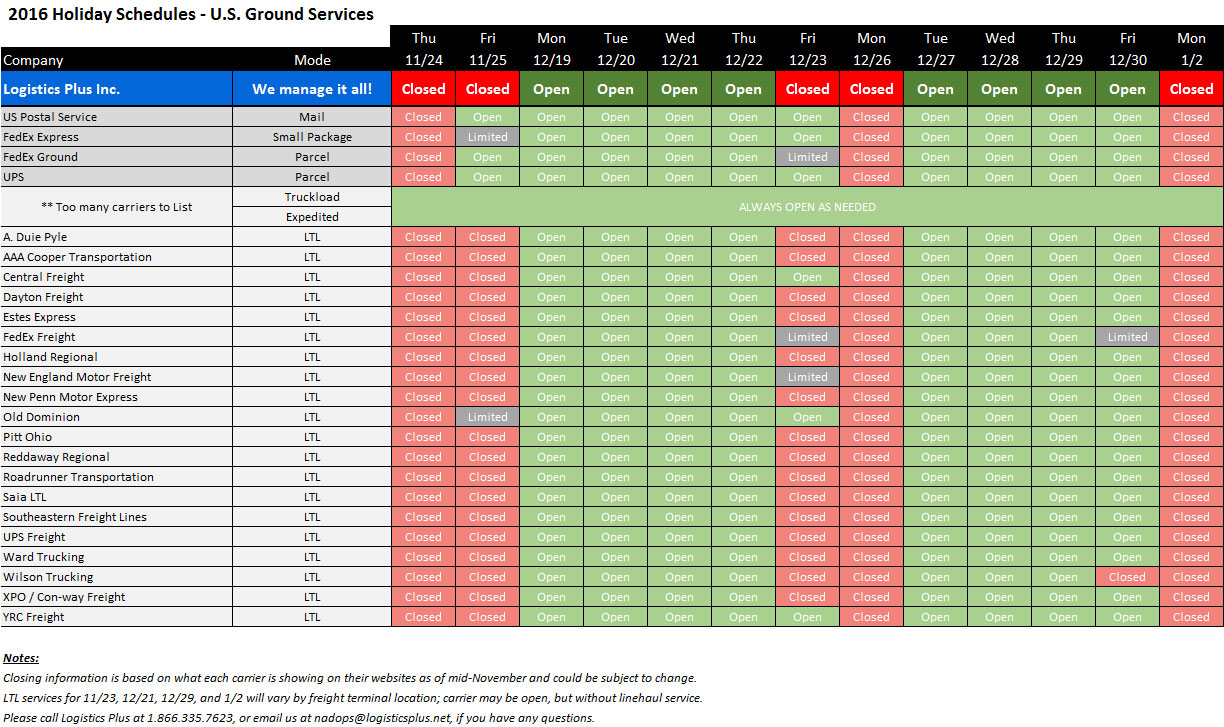
by logisticsplus | Nov 17, 2016 | News
U.S. Holiday schedules for Logistics Plus and ground carriers
As the holidays approach, we want to help you avoid any unnecessary shipping delays over the next few weeks. Shown below is the holiday schedule for U.S.-based Logistics Plus offices and warehouse locations, as well as the top U.S. ground (parcel and LTL) carriers. If you have any special transportation needs, or expedited shipping requests, please contact Logistics Plus in advance of the office closings noted below. You can use the Logistics Plus online global directory to find any of our people or our locations. You can also reach our North American freight division by calling 1.866.335.7623 or emailing us at nadops@logisticsplus.com.

Click image to see a slightly larger version of table.

by logisticsplus | Nov 16, 2016 | News
Wondering whether your domestic freight shipment should move via parcel, less-than-truckload (LTL), or full-truckload (FTL) carrier? Here’s a quick cheat-sheet with some PROs and CONs to each of these ground transportation modes.
 Parcel Shipping: Shipments under 150 pounds and shipped in cartons (less than 108 inches long and 67 inches wide), rather than on a pallet, are often moved via Parcel shipping with carriers such as USPS, UPS, FedEx or regional courier services.
Parcel Shipping: Shipments under 150 pounds and shipped in cartons (less than 108 inches long and 67 inches wide), rather than on a pallet, are often moved via Parcel shipping with carriers such as USPS, UPS, FedEx or regional courier services.
- PROS: Fast service, many delivery options, readily available, lower shipping costs on smaller shipments.
- CONS: More chance of being lost or damaged, lower carrier liability limits per pound, few carrier options.
 Standard Less-Than-Truckload (LTL) Shipping: Shipments between 150 and 5,000 pounds are generally better moved using standard LTL carrier pricing with LTL carriers such as FedEx Freight, UPS Freight, YRC Freight, or regional freight carriers.
Standard Less-Than-Truckload (LTL) Shipping: Shipments between 150 and 5,000 pounds are generally better moved using standard LTL carrier pricing with LTL carriers such as FedEx Freight, UPS Freight, YRC Freight, or regional freight carriers.
- PROS: Relatively fast service, good availability, fewer damages, good with B2B deliveries, higher carrier liability limits pound.
- CONS: Complex pricing structure, higher shipping costs, not always suitable for non-palletized freight, not always great with B2C deliveries, minimal carrier options.
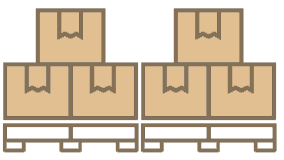 Volume Less-Than-Truckload (LTL) Shipping: Shipments between 5,000 and 10,000 pounds, or taking up more than 6 pallet spaces, are often moved more cost-effectively with a “volume” or “spot” quote. In these situations, the carrier will analyze the weight and dimensions of the shipment and provide a competitive “all-in” rate quote.
Volume Less-Than-Truckload (LTL) Shipping: Shipments between 5,000 and 10,000 pounds, or taking up more than 6 pallet spaces, are often moved more cost-effectively with a “volume” or “spot” quote. In these situations, the carrier will analyze the weight and dimensions of the shipment and provide a competitive “all-in” rate quote.
- PROS: All of the above, plus this approach will generally produce a lower price than standard LTL shipping rates.
- CONS: Often predicated on when or where LTL carrier has equipment available and need for more freight volume, getting quotes takes more time.
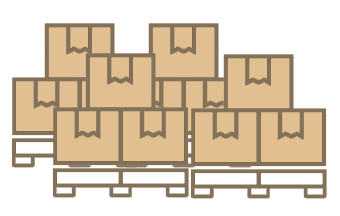 Partial Truckload Shipping: Shipments between 10,000 and 20,000 pounds, or taking up more than 10 pallet spaces, are often moved more cost-effectively as a partial truckload. In these situations, the truckload carrier will analyze the weight and dimensions of the shipment and provide a competitive “all-in” rate quote.
Partial Truckload Shipping: Shipments between 10,000 and 20,000 pounds, or taking up more than 10 pallet spaces, are often moved more cost-effectively as a partial truckload. In these situations, the truckload carrier will analyze the weight and dimensions of the shipment and provide a competitive “all-in” rate quote.
- PROS: Generally produces a lower pricing than standard or volume LTL shipping rates, since shipment only takes up part of the trailer, carrier can sell remaining capacity to another customer to share the costs, many more carrier options.
- CONS: Finding right carrier with capacity is often difficult, predicated on when or where carrier has equipment available, getting quotes takes more time, must vet carrier to ensure safe and reliable.
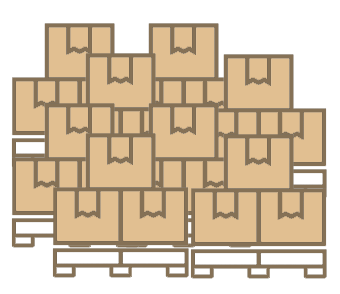 Full Truckload (FTL) Shipping: Shipments over 20,000 pounds are often moved more cost-effectively as a full truckload. In these situations, the carrier will analyze the weight and dimensions of the shipment and provide a competitive “all-in” rate quote.
Full Truckload (FTL) Shipping: Shipments over 20,000 pounds are often moved more cost-effectively as a full truckload. In these situations, the carrier will analyze the weight and dimensions of the shipment and provide a competitive “all-in” rate quote.
- PROS: Generally the most cost-effective way to ship per pound, less susceptible to damages because freight is normally moved door-to-door on one trailer (no re-handlings), many more carrier options.
- CONS: Finding right carrier with capacity is often difficult, predicated on when or where carrier has equipment available, getting quotes take more time, must vet carrier to ensure safe and reliable.
Need help deciding how best to ship your freight the most using the most cost-effective ground transportation mode? Let Logistics Plus help you with a risk-free freight analysis or freight quote.


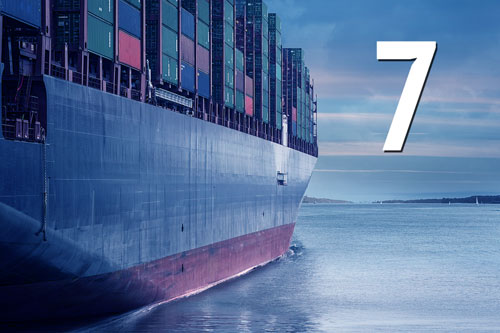
by logisticsplus | Nov 15, 2016 | News
 Here are a few quick, cost-saving tips for importing and exporting from the international air, international ocean, and project cargo freight forwarding experts at Logistics Plus:
Here are a few quick, cost-saving tips for importing and exporting from the international air, international ocean, and project cargo freight forwarding experts at Logistics Plus:
Importing Tips:
- Take the time to confirm your HTS codes before importing. U.S. Customs’ system of classification can be very complicated, and the HTS codes advised by suppliers are not always accurate or match the U.S. classification system 100%. A full cost for imported goods can only be known with the correct HTS codes.
- Keep potential exams in mind when thinking about the transit time, for ocean shipments particularly. An exam can take a week or more, and could be caused by any importer on an LCL consolidation, or a container could be simply selected at random. If goods are time-sensitive, air shipping part or all of the order could save money in the long run.
- Be sure your broker or import forwarder is made aware of all ocean imports well in advance of departure from overseas. An Importer Security Filing (ISF) must be filed timely! Liquidated damages for ISF start at $5,000 for failure to file an ISF, $5,000 for late ISF, $5,000 for inaccurate ISF, $5,000 for an incomplete ISF, and $5,000 for failure to withdraw an ISF. The maximum liquidated damages per ISF filing is $10,000.
Exporting Tips:
- Know your Incoterms®. Incoterms can be a frustrating and confusing to understand; however many exporters do not fully understand the terms to which they are agreeing and, therefore, end up paying more or running into unexpected fees. As an exporter, you need to understand the costs, responsibilities, rights, and obligations that accompany the use of a specific Incoterm. Every quotation or sales order must include a term of sale. If you fail to clearly identify the specific Incoterm to your customer, it can lead to an overestimation or underestimation of the costs associated with the goods you are selling (and a lost sale).
- Research the area to which you are selling. Selling to a new area requires you to keep an open mind. Knowing the market you will be putting your product into can alleviate a lot of the stress with exporting. What currency do they use? What is the local tax or VAT (value-added tax) system? What is the business culture, and/or local culture? When are their holidays or weekends observed?
- Do your paperwork. Know that each country has its own set of importing regulations that require different licenses and customs paperwork. Some countries will require certain stamping, legalizations, or original documents, while others simply accept copies. These vary from country to country, region to region, and with specific commodities.
Most Important Tip:
- Work with an experienced and reputable freight forwarder. An international freight forwarder acts as an agent on your behalf and assists in moving your shipment from its U.S. origin to its foreign destination. Capable freight forwarders are familiar with the import rules and regulations of foreign countries, U.S. import and export regulations, methods of shipping, and required documentation. They can assist you in preparing pricing quotations by providing freight costs, port charges, documentation fees, insurance costs, and handling fees. They can also recommend packaging methods and transportation modes that will best protect your products during transport and ensure they arrive when and where you need them.
Ready to take us up on tip #7? If yes, then click the button below to get started.

by logisticsplus | Nov 15, 2016 | Testimonials
 Tim Crandall and those who work with him, were fantastic! We could not have asked for better service. Always there when we needed, even at totally unexpected hours. Thank you so much! We will without a doubt use you again soon. Thank you sincerely for making what appears to be a very complicated process – smooth as glass!
Tim Crandall and those who work with him, were fantastic! We could not have asked for better service. Always there when we needed, even at totally unexpected hours. Thank you so much! We will without a doubt use you again soon. Thank you sincerely for making what appears to be a very complicated process – smooth as glass!
Amazon Seller Testimonial
Rhonda, CBO at EAGems
edwardallengems.com

by logisticsplus | Nov 10, 2016 | News
 What’s your most pressing logistics challenge? How much time and money are you spending on logistics? Are you measuring the total cost of your freight management activities? Through a “prepaid-and-add” approach, are your vendors charging you more for shipping than you realize for your purchased (inbound) goods? In addition to outbound and inbound freight charges, are you considering order preparation time, time-to-quote, personnel costs, owned-assets versus outsourced assets, inventory carrying costs, loss and damage claims, and insurance costs?
What’s your most pressing logistics challenge? How much time and money are you spending on logistics? Are you measuring the total cost of your freight management activities? Through a “prepaid-and-add” approach, are your vendors charging you more for shipping than you realize for your purchased (inbound) goods? In addition to outbound and inbound freight charges, are you considering order preparation time, time-to-quote, personnel costs, owned-assets versus outsourced assets, inventory carrying costs, loss and damage claims, and insurance costs?
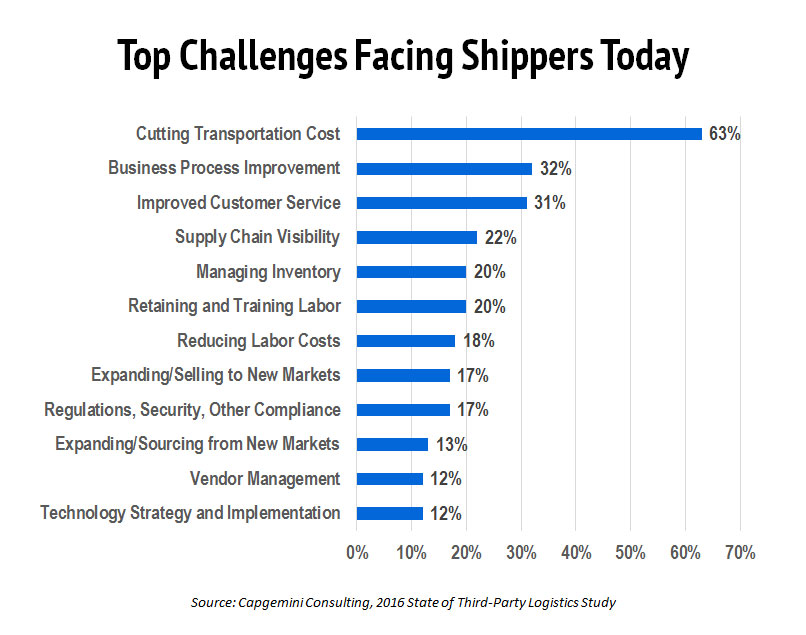 While these questions are not always easily answered, asking them is fundamental to successful P&L management. Outsourcing some or all of your transportation to a logistics company – one like Logistics Plus, which provides the required expertise, people, capacity, warehousing and IT systems – may help convert some of those high fixed costs into reduced variable costs.
While these questions are not always easily answered, asking them is fundamental to successful P&L management. Outsourcing some or all of your transportation to a logistics company – one like Logistics Plus, which provides the required expertise, people, capacity, warehousing and IT systems – may help convert some of those high fixed costs into reduced variable costs.
Logistics Plus Inc. is a leading worldwide provider of transportation and logistics solutions. We have 20 years of experience helping companies, both large and small, reduce transportation expenses and improve their supply chains. General Electric (GE), one of the largest and most successful companies in the world, was our very first customer. Today they top a list of diverse companies that span manufacturing, retail, solar, energy, aviation, food and beverage, and many other industries.
We’ve been named one of the fastest-growing transportation and logistics companies in the country by Inc. magazine; we’ve been recognized as a top employer based in northwestern Pennsylvania; Transport Topics magazine named us a top 50 freight brokerage firm; SupplyChainBrain magazine named us a 2015 Great Supply Chain Partner; and this year Supply & Demand Chain Executive magazine recognized us on their SDCE 100 list for completing a top supply chain project.
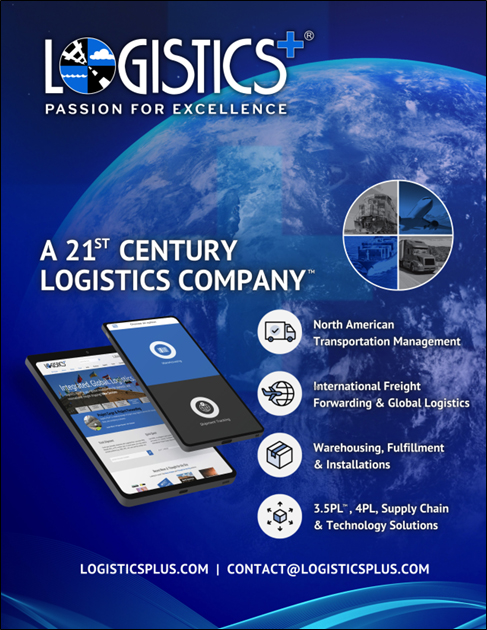 If our services are good for companies like GE, we think there’s a good chance they’ll be good for your company too; which is why we we invite you to learn more about our solutions. But what really sets us apart is our people. We’ve developed a reputation as being the “can-do” company. Our people put the “Plus” in logistics by doing the big things properly, and the countless little things, that together ensure your satisfaction and success.
If our services are good for companies like GE, we think there’s a good chance they’ll be good for your company too; which is why we we invite you to learn more about our solutions. But what really sets us apart is our people. We’ve developed a reputation as being the “can-do” company. Our people put the “Plus” in logistics by doing the big things properly, and the countless little things, that together ensure your satisfaction and success.
As a possible first step, tell the experts here at Logistics Plus your most pressing logistics challenge, and we’ll use our passion for excellence to go to work and design a solution that’s customized for you and your business.




 Parcel Shipping: Shipments under 150 pounds and shipped in cartons (less than 108 inches long and 67 inches wide), rather than on a pallet, are often moved via Parcel shipping with carriers such as USPS, UPS, FedEx or regional courier services.
Parcel Shipping: Shipments under 150 pounds and shipped in cartons (less than 108 inches long and 67 inches wide), rather than on a pallet, are often moved via Parcel shipping with carriers such as USPS, UPS, FedEx or regional courier services.
 Volume Less-Than-Truckload (LTL) Shipping: Shipments between 5,000 and 10,000 pounds, or taking up more than 6 pallet spaces, are often moved more cost-effectively with a “volume” or “spot” quote. In these situations, the carrier will analyze the weight and dimensions of the shipment and provide a competitive “all-in” rate quote.
Volume Less-Than-Truckload (LTL) Shipping: Shipments between 5,000 and 10,000 pounds, or taking up more than 6 pallet spaces, are often moved more cost-effectively with a “volume” or “spot” quote. In these situations, the carrier will analyze the weight and dimensions of the shipment and provide a competitive “all-in” rate quote.
 Partial Truckload Shipping: Shipments between 10,000 and 20,000 pounds, or taking up more than 10 pallet spaces, are often moved more cost-effectively as a partial truckload. In these situations, the truckload carrier will analyze the weight and dimensions of the shipment and provide a competitive “all-in” rate quote.
Partial Truckload Shipping: Shipments between 10,000 and 20,000 pounds, or taking up more than 10 pallet spaces, are often moved more cost-effectively as a partial truckload. In these situations, the truckload carrier will analyze the weight and dimensions of the shipment and provide a competitive “all-in” rate quote.
 Full Truckload (FTL) Shipping: Shipments over 20,000 pounds are often moved more cost-effectively as a full truckload. In these situations, the carrier will analyze the weight and dimensions of the shipment and provide a competitive “all-in” rate quote.
Full Truckload (FTL) Shipping: Shipments over 20,000 pounds are often moved more cost-effectively as a full truckload. In these situations, the carrier will analyze the weight and dimensions of the shipment and provide a competitive “all-in” rate quote.








